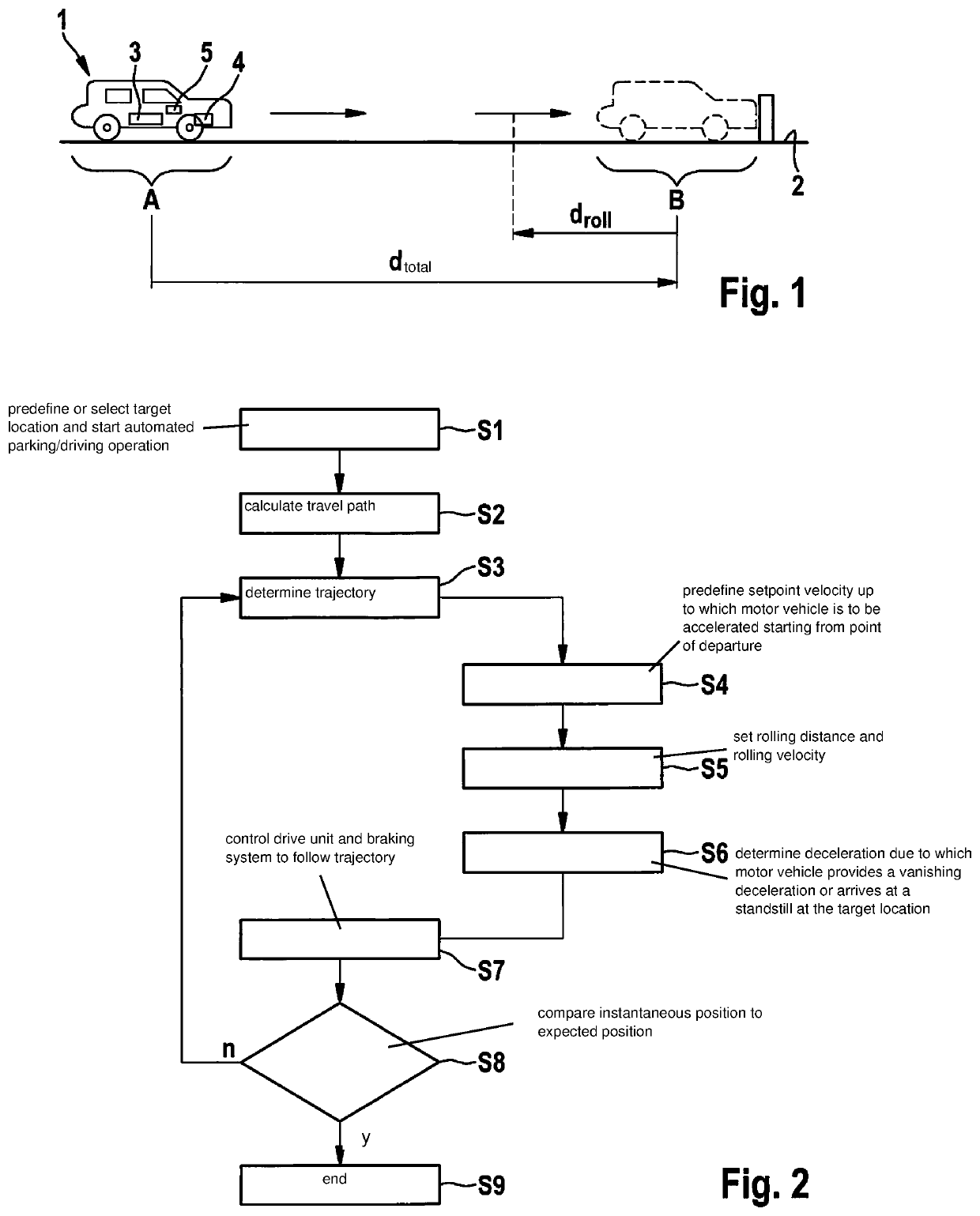Method and device for operating a motor vehicle
a motor vehicle and vehicle control technology, applied in the direction of control devices, vehicle components, external condition output parameters, etc., can solve the problems of difficult compensation, high cost, and delayed stopping of the motor vehicle, and achieve safe and accurate operation, reduce the duration of a comfortable deceleration to a standstill, and improve the accuracy.
- Summary
- Abstract
- Description
- Claims
- Application Information
AI Technical Summary
Benefits of technology
Problems solved by technology
Method used
Image
Examples
Embodiment Construction
[0027]FIG. 1 shows a simplified representation of a motor vehicle 1, which is located on solid ground, for example, a parking lot 2, at a position A. Motor vehicle 1 has a drive unit 3, which includes, for example, an internal combustion engine and / or at least an electric machine, which is connected or connectable to the wheels of the motor vehicle directly or via a transmission. Furthermore, motor vehicle 1 includes a braking system 4, which may exert a brake force as needed on at least one wheel of motor vehicle 1 to decelerate motor vehicle 1. In particular, if drive unit 3 includes one or multiple electric machines, then these may also be used by braking system 4 for decelerating or braking motor vehicle 1. Otherwise, braking system 4 preferably includes one or multiple wheel brakes which interact mechanically, for example, through friction, with the wheels of the motor vehicle. Furthermore, motor vehicle 1 includes a control unit 5 which is designed to control drive unit 3 and ...
PUM
 Login to View More
Login to View More Abstract
Description
Claims
Application Information
 Login to View More
Login to View More - R&D
- Intellectual Property
- Life Sciences
- Materials
- Tech Scout
- Unparalleled Data Quality
- Higher Quality Content
- 60% Fewer Hallucinations
Browse by: Latest US Patents, China's latest patents, Technical Efficacy Thesaurus, Application Domain, Technology Topic, Popular Technical Reports.
© 2025 PatSnap. All rights reserved.Legal|Privacy policy|Modern Slavery Act Transparency Statement|Sitemap|About US| Contact US: help@patsnap.com


